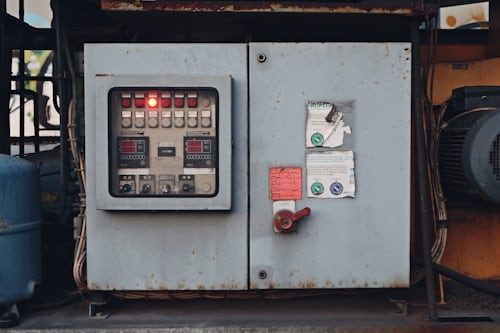What is a 250 kVA Transformer?
A 250 Kva transformer designated as having a 250 kVA (kilovolt-ampere) rating may manage up to 250,000 VA of perceived power. It performs the function of a voltage converter, scaling down high voltage from the main power grid to a lower voltage appropriate for running different kinds of machinery and equipment. By altering the voltage and current levels, a transformer is a static electrical device that transfers electrical energy from one circuit to another.
Difference between Kva and kw for transformers:
Understanding the difference between kVA and kW (kilowatt) is crucial. A transformer’s total apparent power is expressed in kVA, while its actual true power is shown in kW. Useful power output is represented by kW, but the entire electrical load that a transformer can manage is represented by kVA. The kW rating is often less than the kVA rate.
Uses for 250 kVA Transformers:
These transformers are perfect for a variety of applications due to their flexibility. Here are a few well-known applications of 250 Kva transformer :
Industrial facilities: Supplying electricity to control panels, lighting fixtures, and machinery in industrial facilities, workshops, and factories.
Commercial buildings: Providing power for air conditioning units, elevators, lights, and other equipment in stores, restaurants, and offices.
Large residential buildings: Providing electricity to several apartments, condos, or gated communities.
Applications in agriculture: supplying electricity for ventilation systems, grain processing machinery, and irrigation pumps.
Construction sites: Provide short-term electricity for equipment, lights, and tools while building projects are underway.

Material of use in this transformer:
It uses superior material possessing an effective heat dissipation characteristic that can minimize transformer power loss and shield the transformer or other electrical components from internal overheating.
- Excellent copper foil, superior aluminum foil, and premium silicone steel are used as the winding materials on our website.
- Large power photovoltaic inverters in particular benefit from the 250KVA transformer’s electrically isolated core, 50Hz operating frequency, optional AN or AF cooling option, the temperature rise of less than 90°C, and varnish-sealed aluminum or copper windings.
250 kVA Transformer: Key Considerations
To be sure this transformer you choose will fulfill your demands, keep the following elements in mind:
Voltage Input and Output: Determine the main voltage (incoming voltage) and secondary voltage (outgoing voltage) needed for your application. For these transformers, standard primary voltage options can be 13.8 kV, 22 kV, or 34.5 kV, while standard secondary voltage options might be 480V, 208V, or 240V.
Phase Configuration: Evaluate if a single-phase or three-phase transformer is required. Single-phase transformers are used for lower-power applications, whereas three-phase transformers are more frequently seen in industrial settings to accommodate larger loads.
Cooling Type: There are two common cooling arrangements for these transformers: oil-filled and dry type. Oil-filled transformers: greater maintenance is necessary yet they are more efficient. While dry-type transformers are more ecologically friendly and compact, they may not be as efficient when huge loads are applied continuously.
Physical Dimensions and Weight: Make sure you have enough room to install the transformer. Another consideration is weight, particularly with pole-mounted transformers.
Maintenance and Installation of a 250 kVA Transformer:
- How to install a 250 Kva transformer?
Only certified electrical specialists who follow stringent safety protocols must install these transformers. But here’s a broad rundown of the procedure:
Site preparation: It includes picking an appropriate spot, that has enough ventilation, and can be easily maintained.
Installation on a foundation: A concrete pad is built to support the transformer when it is pad-mounted.
Electrical connection: The transformer will be connected to the primary and secondary circuits by licensed electricians.
Testing and commissioning : To guarantee correct operation and safety, the transformer is put through a thorough testing process.
Maintenance for a 250 Kva transformer:
To guarantee the lifetime and optimum functionality of your 250 kVA transformer, routine maintenance is essential. Usually, this includes:
Regular inspections: Look for indicators of overheating, loose connections, and leaks.
Testing with oil (for transformers loaded with oil): keeping a regular eye on the oil’s quality to spot possible problems.
Cleaning and upkeep: Ensuring enough airflow and preventing dust and debris from collecting around the transformer.
Your Guide to 250 kVA Transformer Manufacturers: Selecting the Ideal Partner .
You may be sure you’ll receive dependable, effective equipment that suits your demands if you choose the correct manufacturer. Purchasing 250 kVA transformers is a big choice. This guide outlines important variables to take into account when choosing a 250 Kva transformer manufacturer:
- Expertise in the Industry:
Seek a manufacturer with a wealth of knowledge in the design and construction of superior transformers. A track record of accomplishments attests to their capacity to provide reliable items.
- Product Variety:
Does the producer provide a selection of these transformers with varying phase choices (single or three phases), oil-filled or dry-type cooling systems, and voltage configurations? A suitable match for your application is ensured by choosing from a variety of alternatives.
- Customization :
Is it possible for the manufacturer to tailor a transformer to meet your exact specifications? This versatility comes in handy if you need certain features or have special demands.
- Customer assistance and support:
It is essential to choose a manufacturer with a committed customer service team. They must be easily accessible to respond to your inquiries, offer technical assistance, and help troubleshoot if necessary.
- Warranty and After-Sales Care:
A thorough warranty guarantees the manufacturer will stand behind the quality of their goods, safeguarding your investment. Dependable post-purchase assistance ensures continuous assistance with upkeep and fixes.
You may pick a transformer manufacturer with confidence and get the ideal solution for your power demands if you give priority to these aspects. Check out our website for a wide range of high-performing transformers.
Conclusion:
Shinenergy uses all standard manufacturing tests, such as resistance tests, temperature increase tests, applied potential tests, No-load loss & existing current tests, impendence and load-loss tests, and turns ration testing, to ensure quality.

